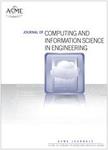版权所有:内蒙古大学图书馆 技术提供:维普资讯• 智图
内蒙古自治区呼和浩特市赛罕区大学西街235号 邮编: 010021

作者机构:Arizona State University Department of Computer Science and Engineering Tempe AZ 85287-5406 United States
出 版 物:《Journal of Computing and Information Science in Engineering》 (J. Comput. Inf. Sci. Eng.)
年 卷 期:2001年第1卷第1期
页 面:23-31页
学科分类:0817[工学-化学工程与技术] 08[工学] 0807[工学-动力工程及工程热物理] 0802[工学-机械工程] 0835[工学-软件工程] 0811[工学-控制科学与工程] 0812[工学-计算机科学与技术(可授工学、理学学位)]
主 题:distributed component Distribute EQUIPMENT Java programming language Common object request broker architecture Middleware computer software
摘 要:From design and manufacturing to electronic commerce, coordinating business activities in engineering applications requires accessing data and software from distributed sources. The Common Object Request Broker Architecture (CORBA) of the Object Management Group emerged in the 1990’s as a standard for access to distributed software components. Since that time, the standard has matured significantly, providing advanced features for event notification and transaction processing. At the same time, Java-based technology for distributed object computing has also emerged, from Remote Method Invocation to Enterprise JavaBeans, Jini Connection Technology, JavaSpaces, Java Messaging Service, and Java Transaction Service. Sorting through the options available for the use of such tools can be a difficult task. This paper provides an overview of CORBA and Java technology for distributed object computing. A comparison of these different technologies is presented, discussing the similarities and differences, as well as the way in which such tools can be used together for distributed access to the types of software and data components that are needed for the construction of distributed engineering applications. Future directions for the use of such tools are also identified. © 2001 by ASME.